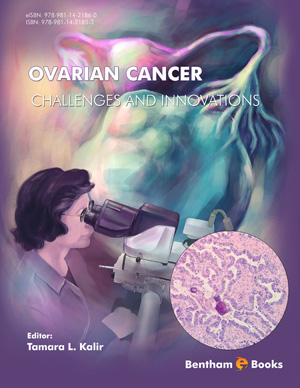Abstract
Epithelial ovarian cancer (EOC) is the leading cause of gynecologic cancer death in the United States and is the fifth most common cause of US cancer mortality in women. It is estimated that 22,440 women are diagnosed with EOC and 14,080 die from the disease in the United States each year [1]. Using the Surveillance, Epidemiology and End Results 1995-2007 database, stage I,II, III, and IV EOC have 5- year survival rates that are 89%, 70%, 36%, and 17%, respectively while the 10-year survival rates are 84%, 59%, 23%, and 8%, respectively [2]. EOC is most commonly diagnosed in women in their sixth and seventh decades. The median age at diagnosis is 63. Incidence is directly proportional to age and more than 70% of patients have advanced disease at initial presentation [3].
In this chapter, we will explore the foundational principles of surgical management of EOC and highlight critical adjuvant therapeutic trials (mostly Level I data) including chemotherapy, biologic therapy, endocrine therapy, and targeted therapy. We will also evaluate the prospects of emerging therapies including immune-modulation and vaccine therapy.Keywords: Bevacizumab, BRCA mutation, Carboplatin, Dose-Dense Chemotherapy, Epithelial Ovarian Cancer, Endocrine Therapy, Emerging Therapies, HIPEC, Immunotherapy, Intraperitoneal Chemotherapy, Minimally Invasive Surgery, Maintenance Therapy, Neoadjuvant Chemotherapy, Primary Cytoreduction, Prophylactic Salpingo-oophorectomy, Paclitaxel, PARP Inhibitor, Staging Operation, Secondary Cytoreduction, Vaccine Therapy.






















